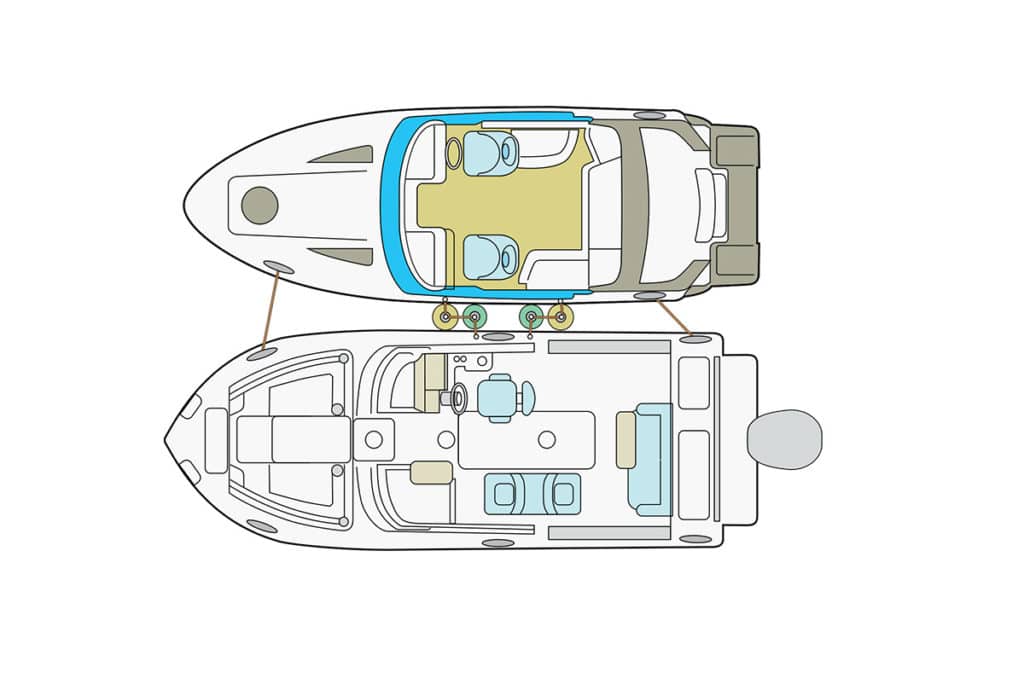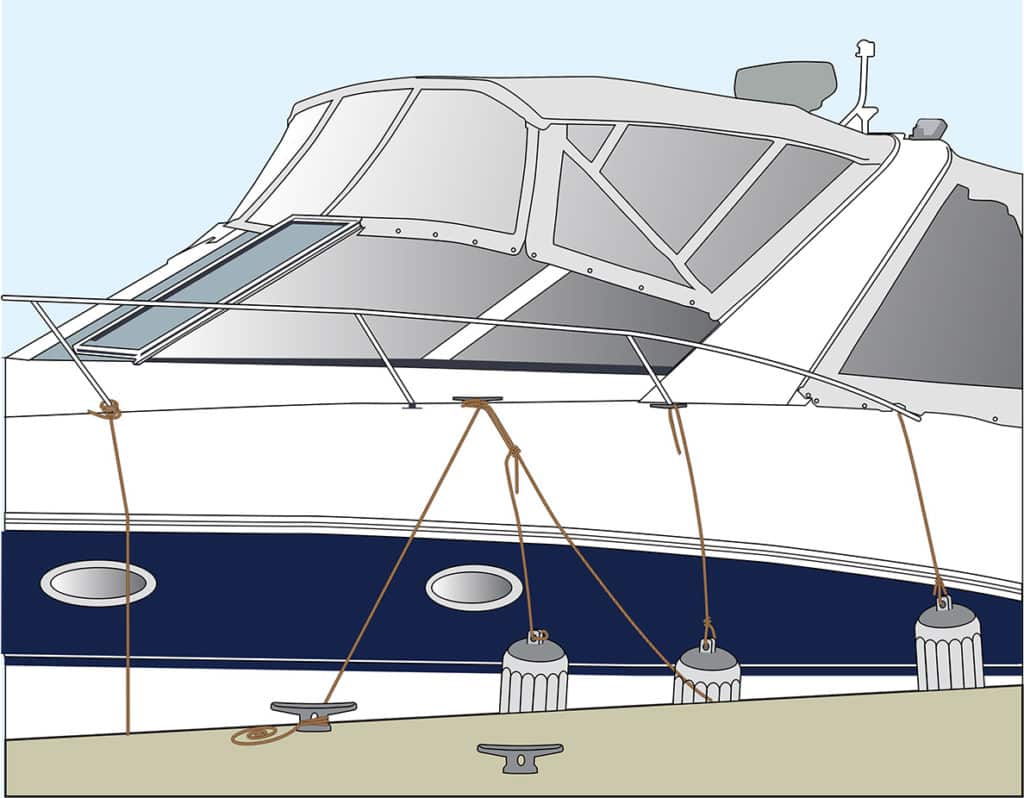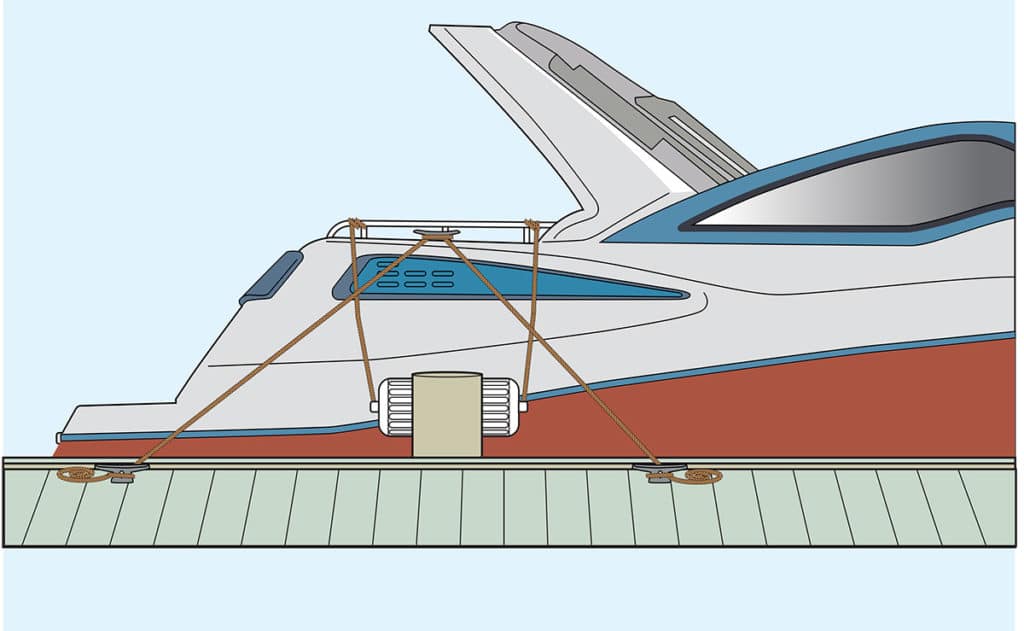Fender? Bumper? Who cares? A “fender” hangs off your boat temporarily to keep you away from a dock, another boat or an obstruction of some sort (fends you off). A “bumper” is attached to a car or truck. OK, so assuming you have fenders correctly sized to your boat, let’s examine the techniques for maximum effectiveness and consider the best method of securing them to a cleat, stanchion or railing.

Rafts
When rafting with other boats, use the largest-diameter fenders in your inventory since different boats tied together will rock differently and have varying freeboard and hull flare. Large-diameter ball fenders are a smart choice because they can hang from the rail or cleats over the topsides, yet are wide enough to keep rub rails from knocking together as well as areas with protruding decks, such as on boats with large bow flare.
Planks
When tied up to a smooth-surface pier, bulkhead or floating dock, vertical placement is the easiest, most practical and preferred method. Place the fender a few inches above the surface of the water to keep it from getting gunked up. A minimum of two fenders should be used, with one being placed at the widest point of the hull and one near the stern. However, the more, the merrier — and less chance of hull damage.

Tie-Offs
Cleats and deck-mounted specialty fittings are best for hanging fenders, since they have a low profile and cannot exert much leverage on the deck or the fasteners securing them. Rail stanchions are also OK to use. Due to the extra leverage created by extra height, hanging fenders to rails may subject the rail and deck to undue stress if a fender gets pinched during the rolling from a large wake. All tie-off points should be through-bolted.

Pilings
When tying up to a dock or pier with exposed pilings or a ”navy style” bulkhead, horizontal placement is the way to go. Some fenders have molded eyes at either end; some let you pass a line through from top to bottom. In either event, center the fender on the piling and tie it horizontally. If the location is rough, or roiled by current, or you will be leaving the boat unattended for longer than lunch, consider using a fender board as an alternative. A pair of cylindrical fenders placed vertically behind a two-by-four is as basic as it gets. The fenders protect the hull and the two-by-four takes the beating from the pilings. Sweet.
Knots
There are three basic knots that work equally well to secure a fender to a stanchion or rail: the clove hitch, the running hitch and the round turn/half hitch. A cleat hitch is used when securing to a deck-mounted cleat. It’s not exactly a hitch, just a series of figure eights around the horn of a cleat, finished with a half hitch. Visit boatingmag.com/knots to learn how to tie them.
Read Next: How to Build a Fender Board









